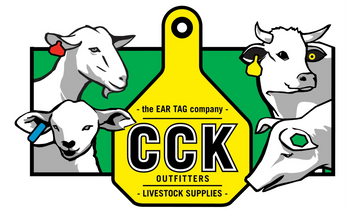Herd Management Numbering Systems- Keep It Simple
Jun 15, 2020
Herd Management Numbering Systems- Keep It Simple
Best Practices for Tagging Cattle
Cows (Breeding Stock)
For long-term breeding animals, use large-sized ear tags. To ensure readability over many years, have the tags professionally laser imprinted by the manufacturer instead of relying on ink markers, which fade quickly. Only handwrite numbers for animals that will remain in the herd for less than a year. Assign numbers sequentially (e.g., 1 through herd size), with the highest number always matching the total number of cows.
Bulls
Differentiate bulls by using a different color of large ear tag. Number them sequentially from 1 through the total number of bulls in the herd for clarity.
Calves
Since calves are often sold or later re-tagged if retained for breeding, use calf-sized ear tags. Maintain two sets of tags that correspond with cow numbers in your herd. This ensures consistency and traceability. Often Calf numbers start with the two year idenitifier of the calf's birth year. For example, 2601 for the first calf born in 2026. Or 2655 for the calf born to Cow #55 in year 2026.
International Letter Code System
To track age more efficiently, cattle producers often use the international year-letter code system. Each year is assigned a specific letter of the alphabet, which is combined with a sequential number (and sometimes the dam’s ID) for complete identification.
-
The system skips the letters I, O, Q, and V to avoid confusion.
-
Example: The 10th calf born in 2025 would be tagged N10. A calf from cow 100L (born in 2023) could be tagged 100N in 2025.
Year-Letter Code Chart
| Year | Letter | Example Calf ID (10th calf of year) |
|---|---|---|
| 2020 | H | H10 |
| 2021 | J | J10 |
| 2022 | K | K10 |
| 2023 | L | L10 |
| 2024 | M | M10 |
| 2025 | N | N10 |
| 2026 | P | P10 |
| 2027 | R | R10 |
| 2028 | S | S10 |
| 2029 | T | T10 |
| 2030 | U | U10 |
| 2031 | W | W10 |
(System continues, cycling through the alphabet while omitting I, O, Q, and V.)
✅ For a full reference list of past and future year-letter codes, see the Beef Improvement Federation guide here.
Example of a Herd Tagging System
Suppose you manage a herd of 100 cows and 2 bulls. Your tagging system might look like this:
-
Cows: Use large pink ear tags, numbered 1 through 100.
-
Bulls: Use large blue ear tags, numbered 1 and 2.
-
Calves: Prepare medium calf-sized tags, numbered 1 through 100, with two sets of each number ready before calving season. Color coding (e.g., pink for heifers and blue for bull calves) can be added if desired.
At calving:
-
Tag each calf with the same number as its dam. For instance, if cow #51 has a calf, the calf is also tagged #51.
-
Keep two sets of tags on hand in case of a lost tag or multiple births (e.g., twins).
At year’s end:
-
Remove the calf tags with a tag removal knife, sanitize them, and store for reuse in the next calving season.
-
Purchase a fresh supply of tag buttons to apply them again.
-
Any calves retained as replacements are re-tagged with large ear tags and added to the existing numbering system (e.g., the next heifer becomes cow #101 in pink; the next bull becomes #3 in blue).
Optional Customization:
-
Custom ear tags with your ranch name and phone number can be used for cows, bulls, and calves. These tags remain in the animals, serving as both identification and advertising.
-
Place visual tags in the right ear.
-
Place EID tags or insecticide tags in the left ear (check state regulations).
-
Some ranchers choose to double-tag animals—one tag for the management number and another with ranch details (name, phone number, city, state).
When selling livestock:
-
Retain the numbered management tag, but allow the custom tag to remain with the animal as a form of ongoing ranch promotion.

